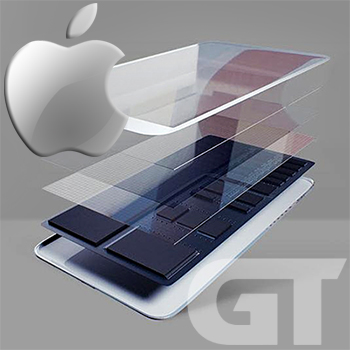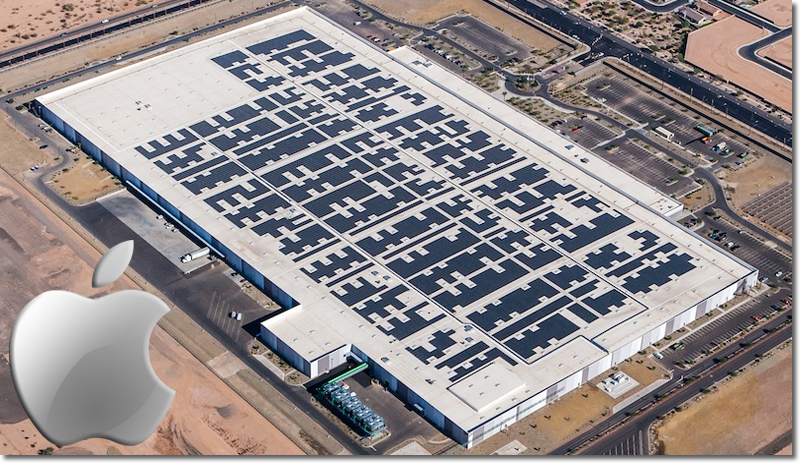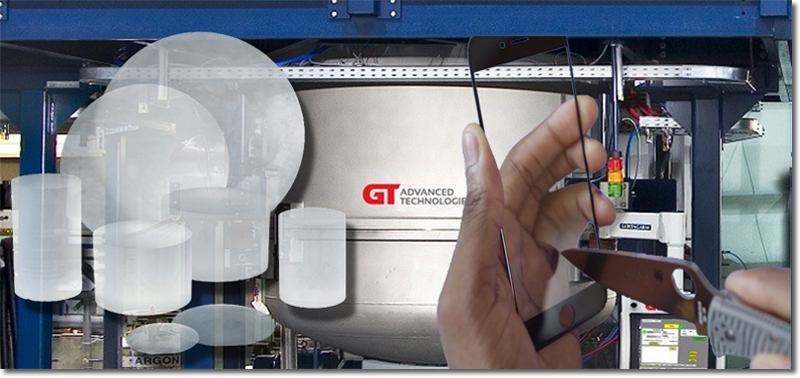On Monday 17 July 2000, the graphics card company ATI put out a press release telling people to watch out for its Rage and Radeon cards in three new iMac computers to be unveiled by Steve Jobs, then Apple’s chief executive, in his keynote at Macworld in New York the coming Wednesday.
On the Wednesday, Jobs did show off new iMacs – but ATI and its Radeons were absent.
Furious at having his thunder stolen, Jobs had removed ATI and Radeon from the keynote, Apple press releases, its booths and the machines themselves.
“Steve has been so careful to hide any details – even the smallest of details such as the number of new products to be announced,” a company source told ZDNet at the time . “Something like this can really ruin things.”
Though Apple under Tim Cook seems a calmer place, getting things wrong can have similarly disastrous fallout – as the executives at GT Advanced Technologies (GTAT), until last year a little-known maker of solar power systems in New Hampshire, found over the past three months.
A $578m deal signed between Apple and GTAT in November 2013 looked as though it would not only bring sapphire screens to iPhones, but also create thousands of jobs in the US, salving a sore point with legislators critical of Apple’s use of foreign assembly for almost all its products, especially the iPhone and iPad.
But it ended in October 2014 with GTAT filing for bankruptcy, hundreds of people put out of work, and GTAT’s chief executive and chief operating officer facing questions about insider dealing after they sold millions of dollars worth of GTAT stock before Apple’s iPhone announcement in September.
As quickly became clear, the new iPhones don’t have sapphire screens, leading some to ask if the stock sales were triggered by insider knowledge about GTAT’s worsening financial position.
Apple wanted sapphire screens – and at scale
GTAT’s downfall also gives a tantalising glimpse into what might have been. Apple wanted sapphire – a super-hard, very transparent crystal which can be made industrially and has to be cut with diamond-coated wire – for camera lenses and the Touch ID sensor on iPhones and iPads, and also for its forthcoming Watch, due for release in spring 2015.
But it’s clear it also wanted it for millions of phones – and had the GTAT deal succeeded, Apple would have cornered the market for cheap sapphire, giving itself a notable lead over rivals such as Samsung, which boasts super-AMOLED screens that it makes and uses exclusively. Though Kyocera of Japan and the super-expensive Vertu offer sapphire screens, neither makes them in the gigantic numbers that Apple does for its iPhone.
Cornering supplies is often key for companies trying to control a market. In 2005, Apple bought up huge amounts of flash memory for its iPod Nano music player – shutting most rivals out. It demanded an exclusivity arrangement with Toshiba, maker of the 1.8in hard drive in the first iPod.
Though it doesn’t actually own any factories, Apple pours gigantic amounts of money – about $12.5bn in the past four quarters – into “plant, property and equipment”, the majority equipping its suppliers to make its products. (It is spending about $3bn – nearly as much as chipmaker Intel, though far less than Samsung Electronics, which has factories making screens, hard drives, and memory chips as well as phones, tablets and computers.
Apple can make or break a supplier
The reality is that Apple, as the most valuable company on Earth by market capitalisation, now has the power to make or break a company through its supplier relationships (unlike Jobs’s pique, which had minimal effect on ATI). Being known as a supplier to it has definite value, one company – which is listed in Apple’s top 200 list – told the Guardian: “The value lies in the fact that Apple is recognised as having a high-quality build spec, so a relationship reflects well on that supplier’s products,” an executive said.
And even if Apple doesn’t name a company as a supplier, its name will still leak out, as one supplier executive explained to the Guardian: “Tech analysts always ‘tear down’ a new model – components are usually stamped with the suppliers’ names inside. Reviews of new phones will mention key components with regard to performance enhancement.”
The executive didn’t want to be named – or to have their company named. He said that isn’t unusual: “None of the top players let their suppliers talk about supplying them – it’s too competitive an industry to allow this.” The Guardian contacted a number of suppliers to Apple; all indicated that they could not talk on the record.
In that sense, GTAT was unusual, because its supplier relationship was so public. On paper, the deal looked like a marriage made in heaven. The “multi-year” deal was in effect a loan to operate 2,600 of sapphire furnaces (which Apple would own) in a disused 1.3m square foot factory in Mesa, Arizona and another in Salem, New Hampshire.
Then Apple tweaked the deal: GTAT would buy 2,036 furnaces, borrowing the money from Apple; in return it would only supply Apple, and nobody else in the consumer electronics market.
But as the forecast volumes and revenues strongly indicate, it also wanted GTAT to begin making sapphire iPhone screens.
Apple declined to comment on whether GTAT’s sapphire production would have been used for phone screens.
Through the Apple deal, GTAT expected revenues to double
GTAT, meanwhile, had joined the stock market in 2012, but increasing competition pushed it into loss.
In February 2013, seeking new revenue streams, it took a booth at Mobile World Congress, where it showed off a sapphire screen overlay – put over an iPhone 5 – that withstood whacks from pieces of concrete while a similar glass cover using Corning’s Gorilla Glass was soon scratched and battered. Apple, which had begun using sapphire in 2012’s iPhone 5 camera lens and was now preparing to use it in the 5S’s Touch ID, got in touch.
In July 2013, GTAT was profiled by Greentechmedia as “selling solar equipment and surviving”, and “one of the more mature solar companies that most people haven’t heard of”.
GTAT was sure it had the magic element that was needed to go beyond that: the ability to make enough sapphire to cover millions of smartphone screens. Announcing its (loss-making) third-quarter results in November 2013, GTAT’s business had three branches: polysilicon, making about 75% of revenues; photovoltaic, about 10%; and sapphire crystals, about 15%.
But unveiling the Apple deal, GTAT said it expected in 2014 that total revenues would more than double to between $600m and $800m, compared to the $290m-$320m for 2013.
Crucially, the sapphire segment would rocket to “approximately 80% of the year’s total revenue”. That would mean between $480m and $640m in sapphire revenues, compared to about $45m in 2013. Expectation that the deal would pay off saw GTAT’s share price double between November 2013 and March 2014.
The company would produce up to 200m sapphire phone screens, estimates said
A forecast of a tenfold increase in sapphire sales makes it highly unlikely that GTAT was only going to make screens for the Apple Watch, and camera and Touch ID lenses. Neither company has ever said what the plan was. But the February 2013 demonstration, and ambitious scale of the Mesa plant, indicates that sapphire screens were the aim.
Ralph Gutierrez, GTAT’s chief executive, made encouraging noises in February 2014 about progress; independent calculations suggested it could produce enough sapphire for between 100m and 200m phone screens. (Apple sold 153m iPhones in 2013.)
In March, Corning, which had made previous iPhone screens, betrayed its nervousness in its results call, dismissing sapphire as too expensive, not that much better than glass, and prone to shattering instead of cracking if dropped.
However, court documents released in the past two months show that GTAT found Apple’s supplier terms onerous. Targets were ambitious – to make 262kg cylindrical “boules” of pure sapphire, twice as large as it had made before, in four times as many furnaces, operating at full capacity within seven months of the contract’s signing, in a seven-year exclusive deal.
Apple crushed GTAT with the terms of the deal
But GTAT faced an uphill battle almost immediately. Apple offered a lower price for the sapphire than GTAT expected, and wouldn’t budge – meaning GTAT was selling its sapphire at a loss. It faced a $650,000 fine if it let another company use one of the $200,000 furnaces; a $640,000 fine if it sold a 262kg boule of sapphire (worth $20,000) to a rival; a $320,000 fine for late boule delivery (or $77 per millimetre of sapphire). Apple, though, could cancel a purchase at any time.
Plus a $50m – that’s million – “breach of confidence” liability if GTAT disclosed any of the agreements; but Apple was under no such liability.
Daniel Squiller, GTAT’s chief operating officer, said that when GTAT queried the many terms in the contract – and their clear tilt in Apple’s favour – it was told “similar terms are required for other Apple suppliers”.
The key problem was yield. GTAT couldn’t get the furnaces to make sapphire in the amount and quality required. If it had, the average price of sapphire would have been low enough that Apple could have used it for phone screens, and GTAT would have been handsomely rewarded.
Instead, Squiller complains that Apple wouldn’t let GTAT’s staff choose the tools for working the boules, and that nearly a third of the staff’s time was spent interacting with a delegation from Apple from its supply chain, manufacturing and quality engineering team.
Reports surfaced in July that GTAT’s production had hit an obstacle. Doubts grew.
Apple refused to pay the next loan installment
By mid-2014, progress was so bad that Apple refused to pay GTAT the second instalment of the payment. That quickly caused a cashflow crisis for the company as it tried to pay a workforce, fix the furnaces, and achieve ignition on the deal. Squiller said in a court affidavit on 28 October that the losses were “largely due to actions not within [GTAT’s] control.”
He said GTAT spent $900m on the work, of which Apple’s loan only covered $439m. And it would still have to repay Apple, which in the event of non-payment could foreclose on the furnaces and sell them to recover its loan.
Apple, and the city of Mesa, bore responsibility too, argue GTAT’s executives: the first phase of factory construction wasn’t finished until December 2013, leaving just six months to be at full capacity, and there were problems with power supplies to the giant site which caused a crucial three-month delay, and Apple’s refusal to have power backups for the furnaces led to some failures that held it up, Squiller argued.
GTAT chose bankruptcy to release itself from Apple deal
Gutierrez meanwhile sold stock in the first three days each of May, June and July; GTAT has said the timings had been agreed in March, and were not impromptu.
In May, Squiller sold 116,000 GTAT shares then worth $1.2m – after Apple had refused to make the final $139m loan payment in April. He later sold $750,000 worth of stock ahead of GTAT’s bankruptcy filing at the start of October.
On 9 September Cook showed off the new phones – without sapphire screens. By 10 September GTAT stock was down 25% to $12.78; by Friday 3 October it stood at $11.05. On Monday 6 October, GTAT filed for Chapter 11, and its stock plummeted to $0.80. Trading ceased on 15 October.
Squiller says in the deposition that GTAT put itself into Chapter 11 bankruptcy (which protects a company from its creditors) simply to release itself from the Apple deal – and hence save the company.
The US manufacturing success story – that never happened
Are such onerous terms unique to Apple, I asked another of its suppliers? “The leading handset manufacturers all have strong pricing power vis-a-vis their suppliers, but that is universal across most industries,” its executive said. “As a supplier, one needs to find a USP [unique selling point] that the customer values enough to pay for it.”
And would they take a loan from Apple? Are they offered on better or worse terms than a bank’s? “We have good cash flow and a robust balance sheet so do not have need of loans from any customers,” the executive replies, cautiously.
For Apple, meanwhile, the loss of one supplier is not the end of the world. It reverted to Corning for its screens, with Phil Schiller talking of their “ion-strengthened” qualities.
The story of GTAT shows us what might have been: iPhones with sapphire screens, and a successful US-based manufacturing story. It also shone a light on the desperate struggle to implement new technology at a global scale – and the penalties for failure.
Source: guardian.co.uk © Guardian News and Media 2014
Related Article: Seven Techniques for Preparing Winning Negotiations with Your Key Suppliers

Article topics
Email Sign Up





















